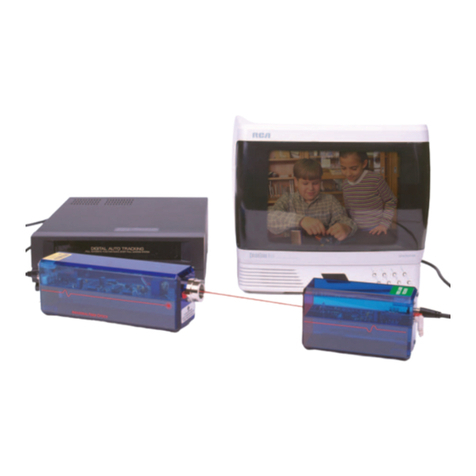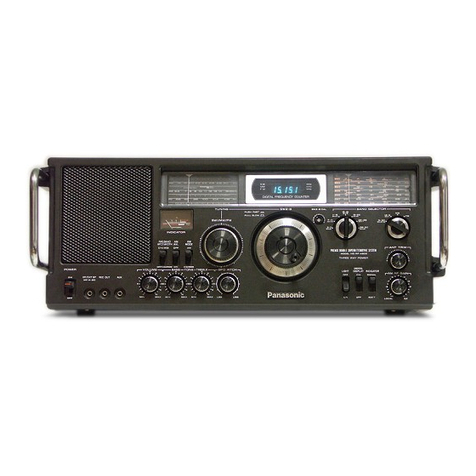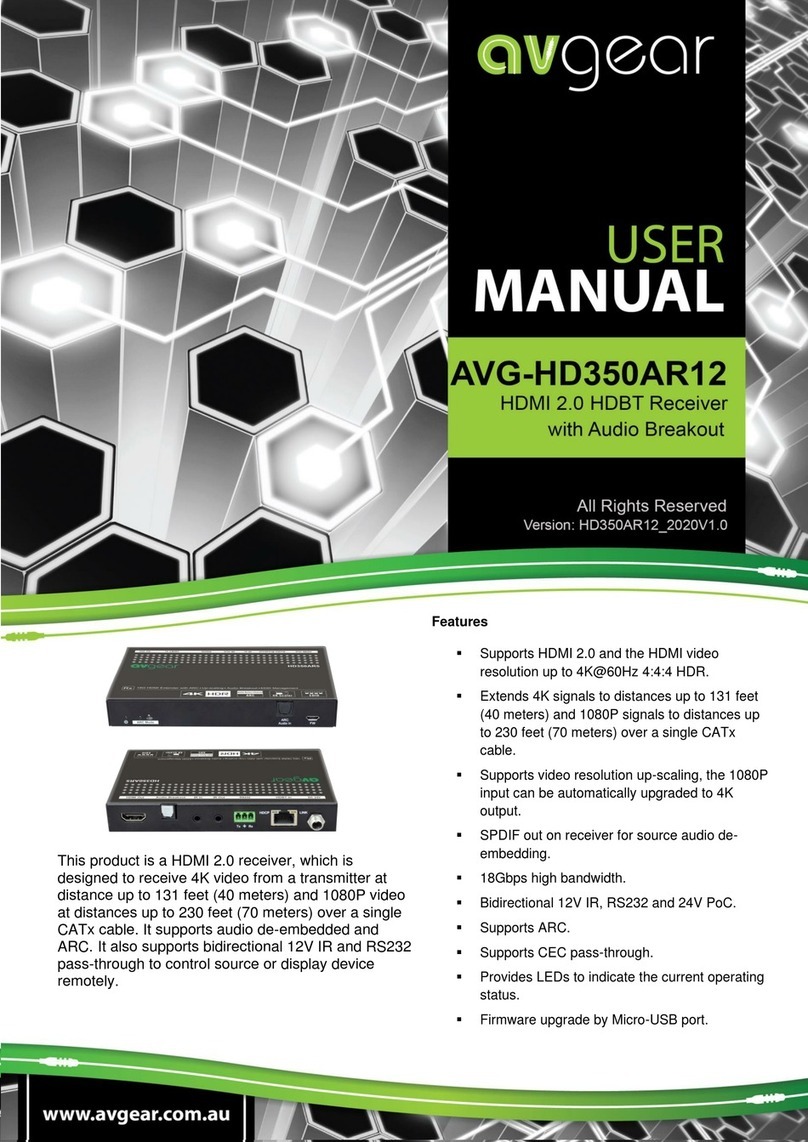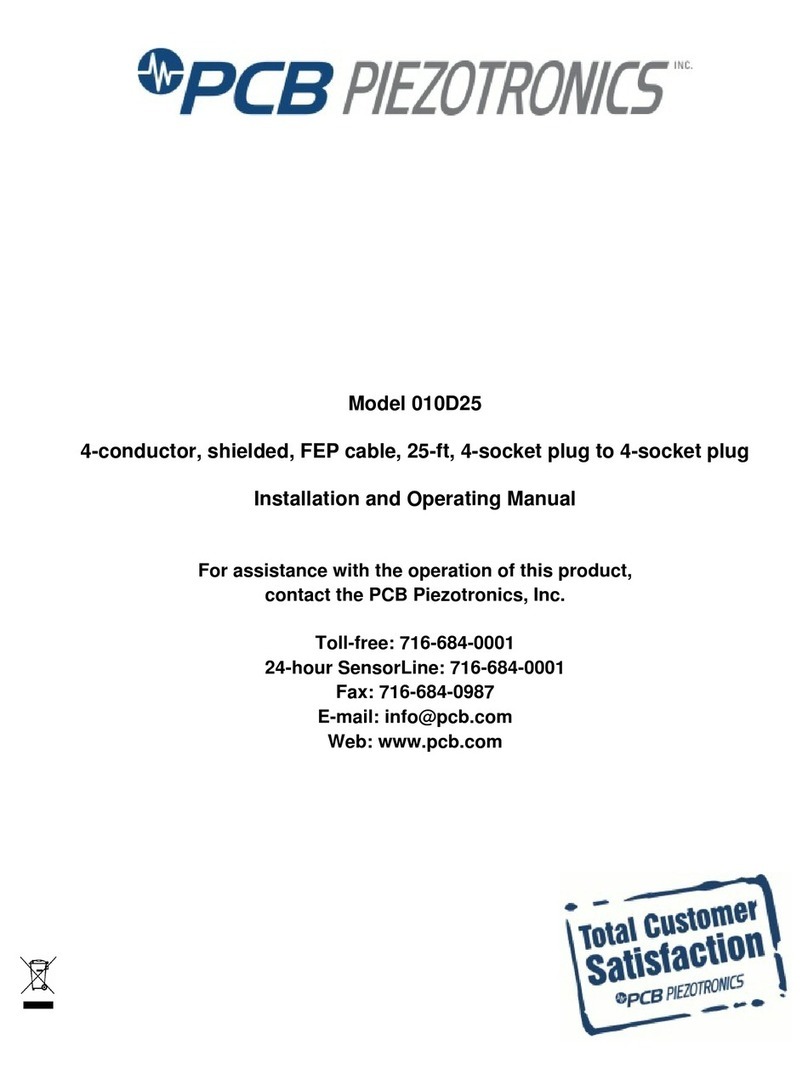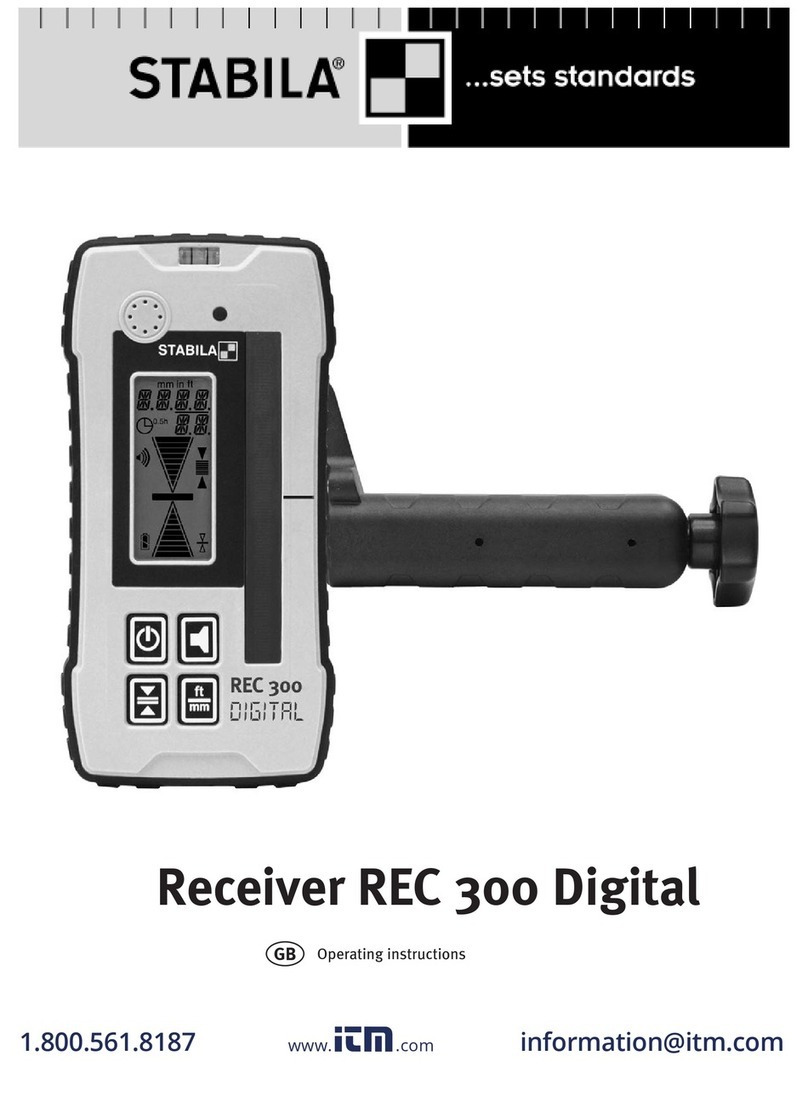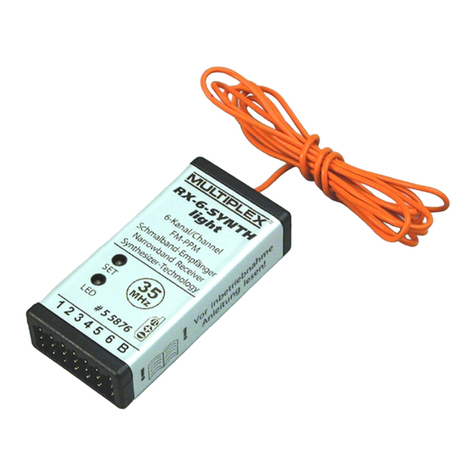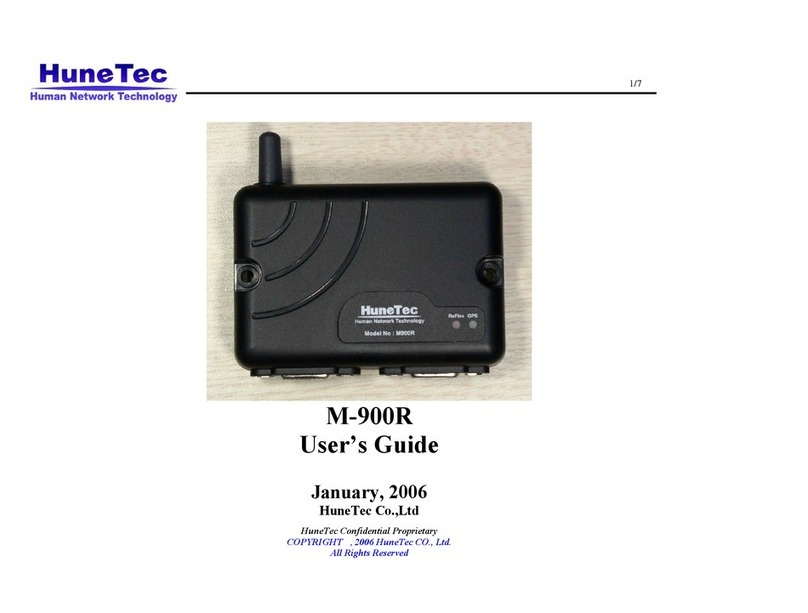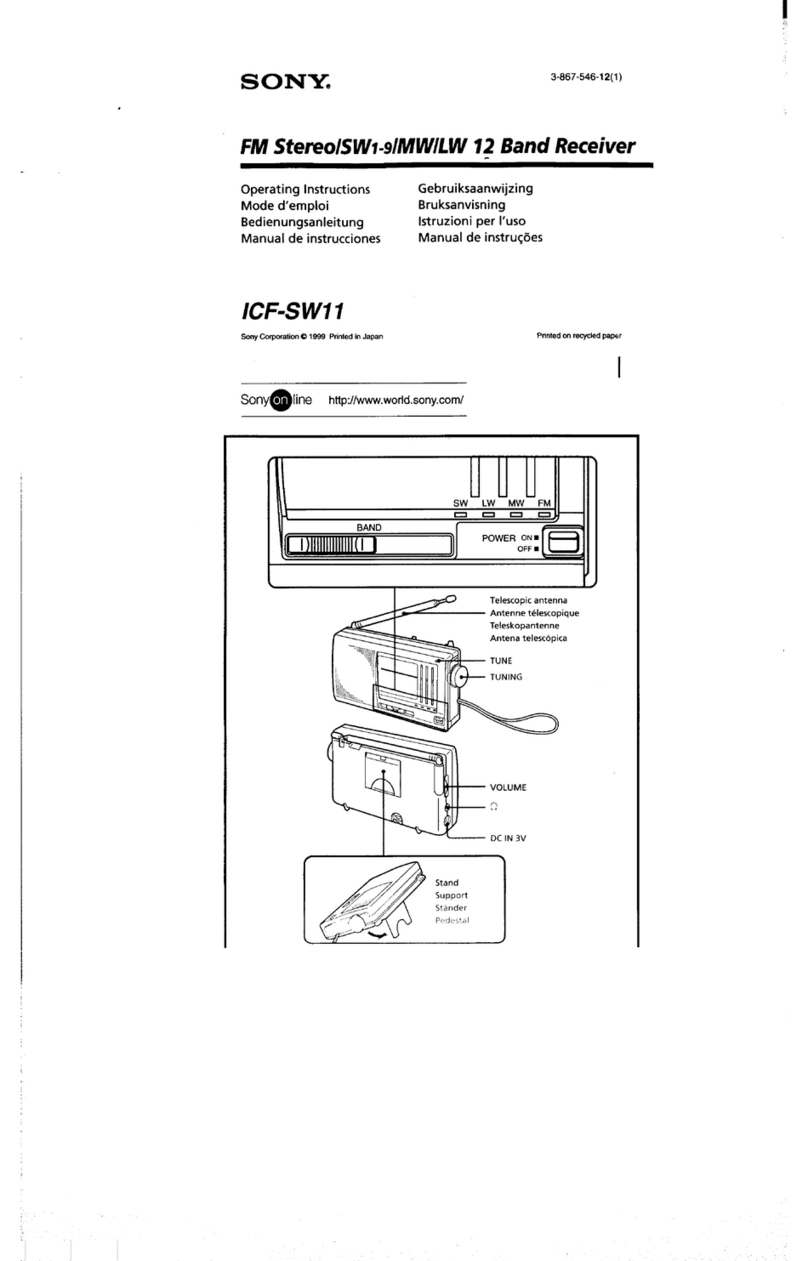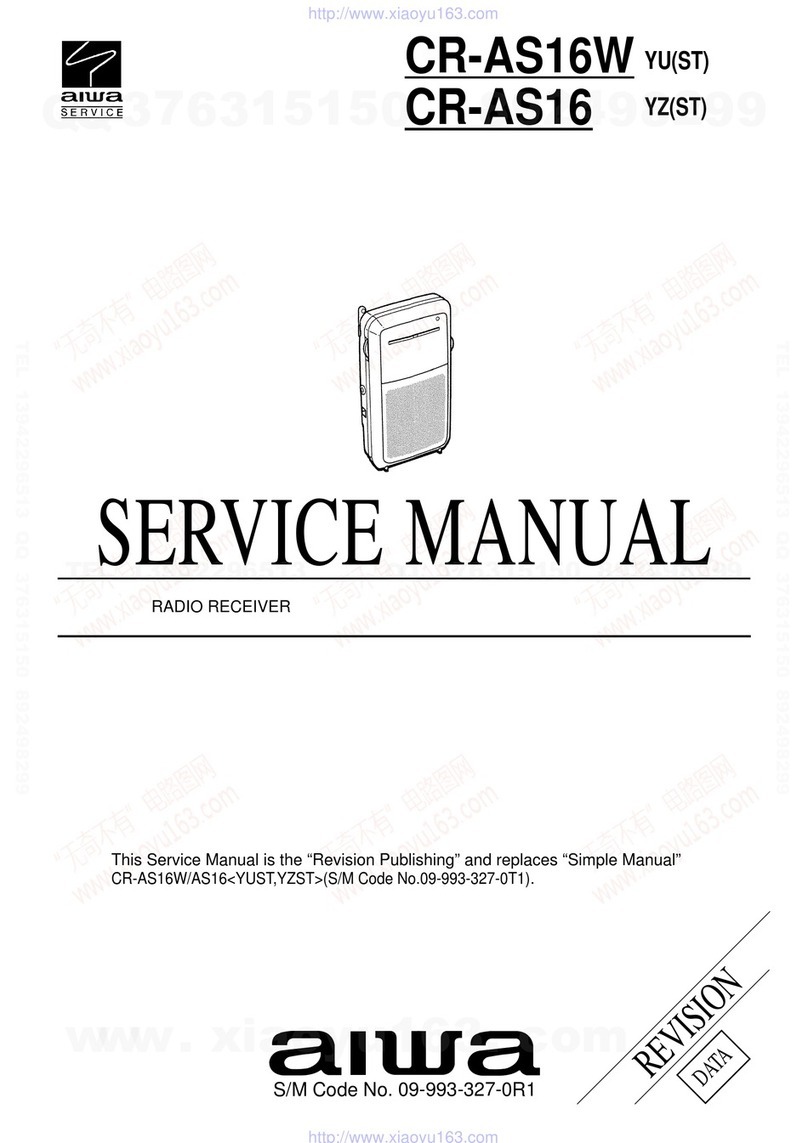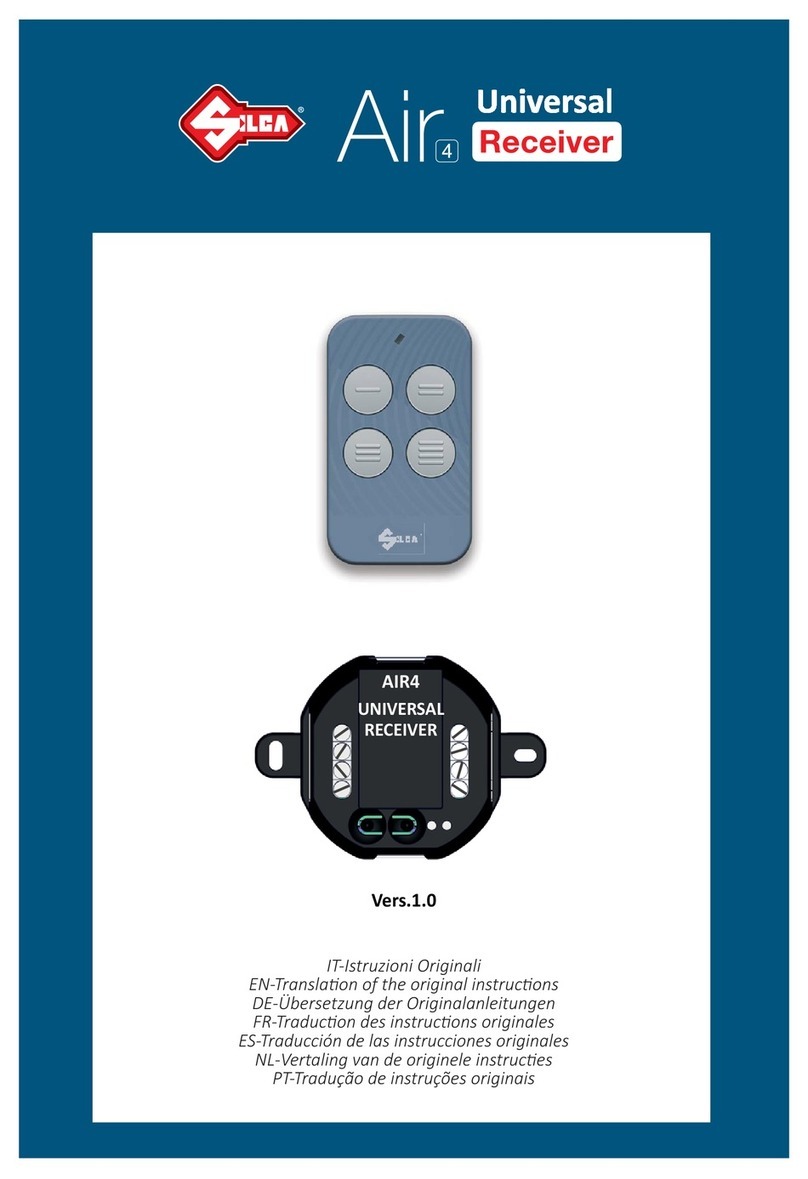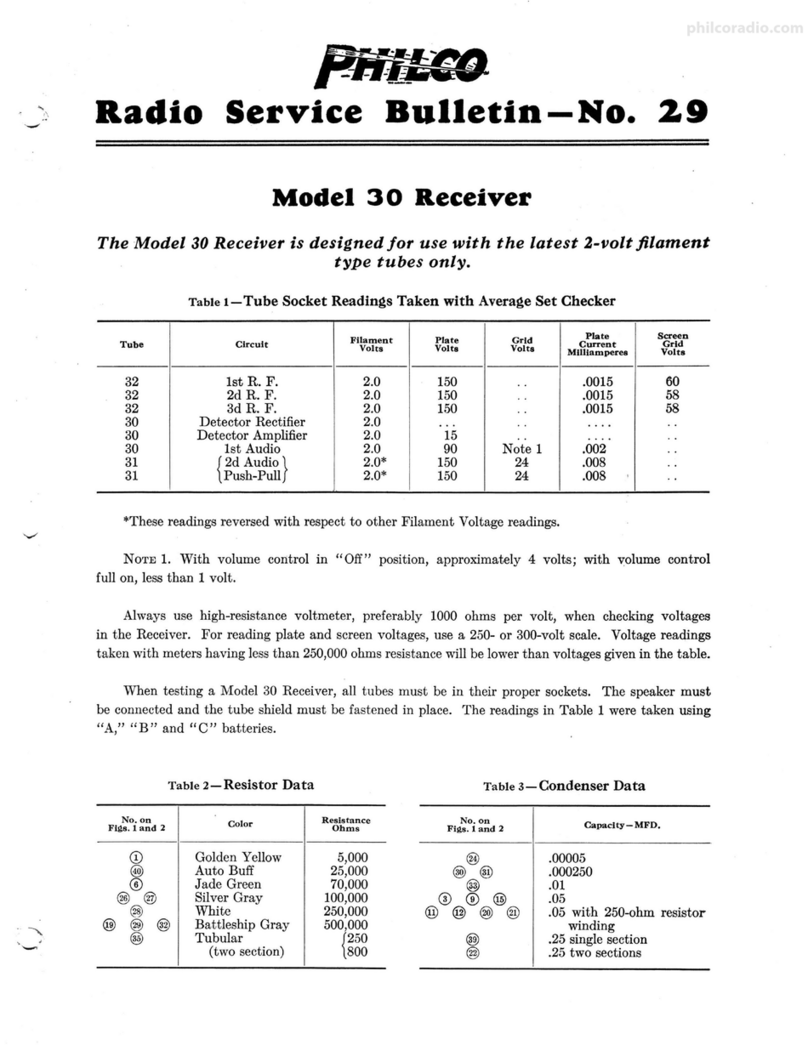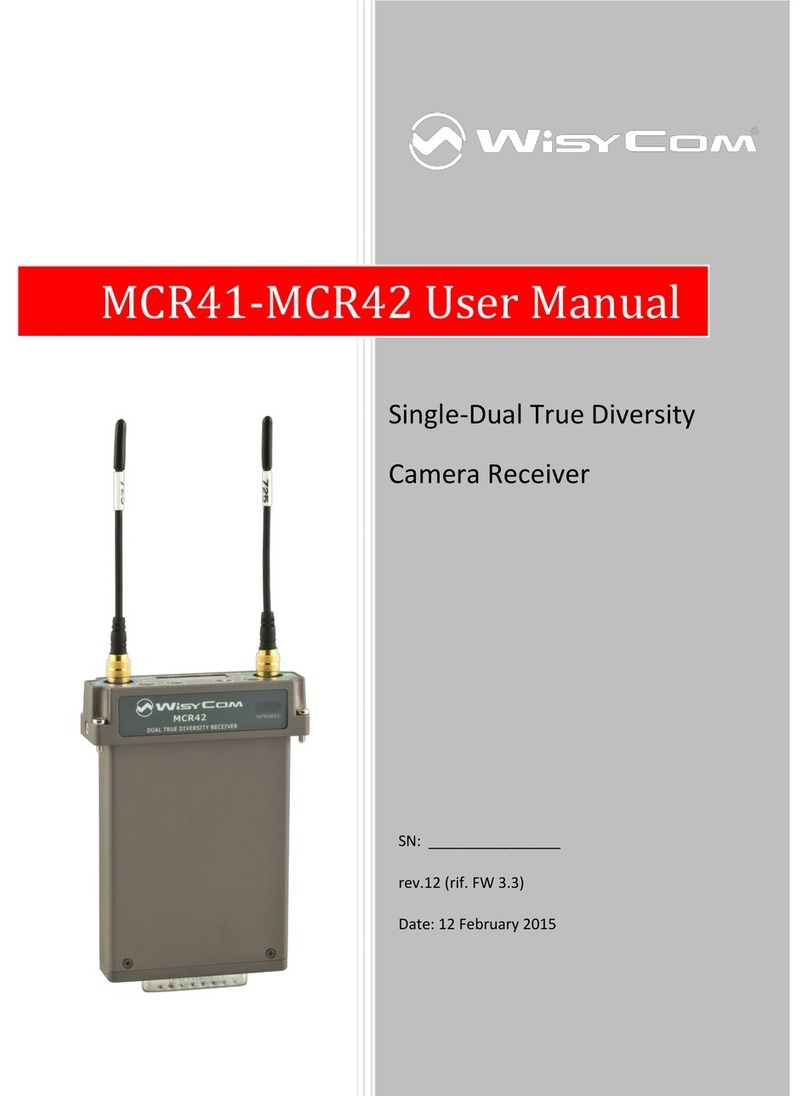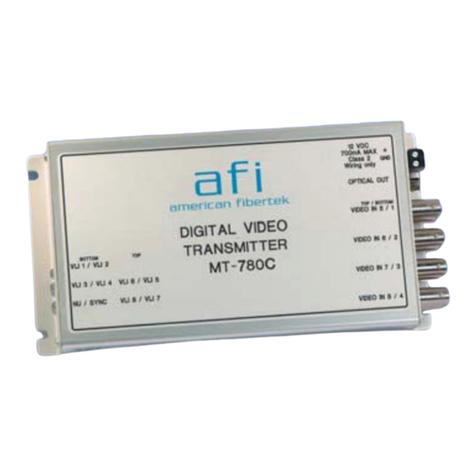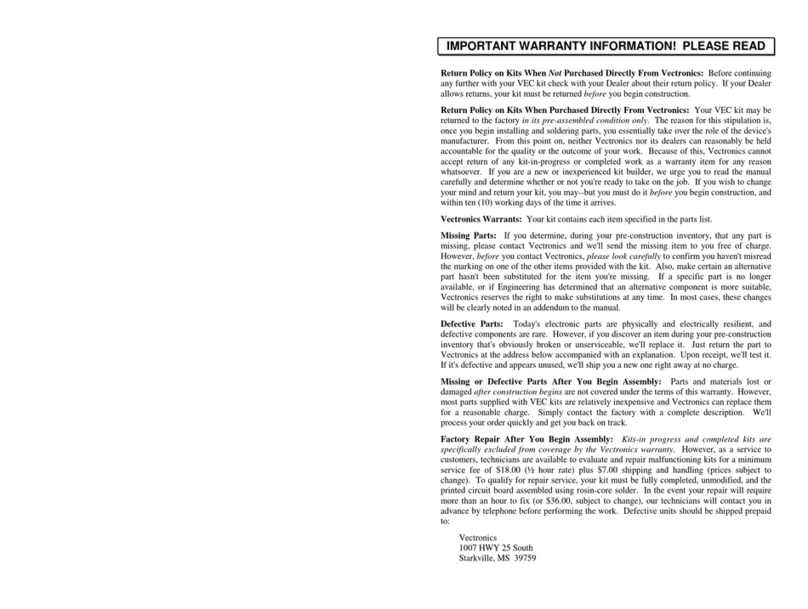Industrial Fiber Optics IF-513 User manual

Laser Audio
Receiver
Operator’s Manual
IndustrIal FIber OptIcs
Model Number:
IF-513

*
Copyright © 2023
Previous Printings 2018, 2009, 2004, 2006
by Industrial Fiber Optics, Inc.
Revision - F
Printed in the United States of America
* * *
All rights reserved. No part of this publication may be reproduced,
stored in a retrieval system, or transmitted in any form or by any means
(electronic, mechanical, photocopying, recording, or otherwise)
without prior written permission from Industrial Fiber Optics.
* * * * *

– i –
INTRODUCTION
This manual provides operating information for Industrial Fiber Optics’ Laser
Audio Receiver, IF-513. This reciever is used to demodulate the audio signal
(generated by a microphone or other audio source) from the beam of a Helium
Neon (HeNe) laser, IF-HN08M, or a Semiconductor Diode laser, IF-RL08-635.
The manual contains all the information you need to complete this project safely
and knowledgeably, even if you are a novice to this technology. Please read the
manual carefully while completing the activity.
As soon as you receive the Laser Audio Receiver, inspect it and the shipping
container for damage. If any damage is found, immediately refer to the section of
this manual entitled “Shipment Damage Claims”.
Industrial Fiber Optics makes every effort to incorporate state-of-the-art
technology, highest quality and dependability in its products. We constantly
explore new ideas and products to best serve the rapidly expanding needs of
industry and education. We encourage comments that you may have about our
products, and we welcome the opportunity to discuss new ideas that may better
serve your needs. For more information about our company and products refer to
www.i-beroptics.com.
Thank you for selecting this Industrial Fiber Optics product. We hope it
meets your expectations and provides many hours of productive activity.
Sincerely,
The Industrial Fiber Optics Team

– ii –
Class Description
IA laser or laser system, which does not present a hazard to skin or
eyes for any wavelength or exposure time. Exposure varies with
wavelength. For ultraviolet, 2 to 4 µm exposures is less than from
8 nW to 8 µW. Visible light exposure varies from 4 µW to 200 µW,
and for near-IR, the exposure is < 200 µw. Consult CDRH regula-
tions for specic information.
II Any visible laser with an output less than 1 mW of power. Warning
label requirements – yellow caution label stating maximum output
of 1 mW. Generally used as classroom lab lasers, supermarket
scanners and laser pointers
IIIa Any visible laser with an output over 1 mW of power with a maxi-
mum output of 5 mW of power. Warning label requirements – red
danger label stating maximum output of 5 mW. Also used as class-
room lab lasers, in holography, laser pointers, leveling instruments,
measuring devices and alignment equipment.
IIIb Any laser with an output over 5 mW of power with a maximum out-
put of 500 mW of power and all invisible lasers with an output up
to 400 mW. Warning label requirements – red danger label stating
maximum output. These lasers also require a key switch for opera-
tion and a 3.5-second delay when the laser is turned on. Used in
many of the same applications as the Class IIIa when more power
is required.
IV Any laser with an output over 500 mW of power. Warning label
requirements – red danger label stating maximum output. These
lasers are primarily used in industrial applications such as tooling,
machining, cutting and welding. Most medical laser applications
also require these high-powered lasers.
LASER CLASSIFICATIONS
All manufacturers of lasers used in the United States, must conform to regulations admin-
istered by the Center for Devices and Radiological Health (CDRH), a branch of the U.S.
Department of Health and Human Services. CDRH categorizes lasers as follows:

– iii –
TABLE OF CONTENTS
Introduction……………………….................…….....…………..…… i
LASER AUDIO RECEIVER PROCEDURE......................…...…….. 1
TROUBLESHOOTING..................................................................... 3
SERVICE AND MAINTENANCE .................................................... 4
WARRANTY..................................................................................... 5
SHIPMENT DAMAGE CLAIMS....................................................... 6


– 1 –
LASER AUDIO RECEIVER PROCEDURE
Equipment Needed:
Modulated HeNe or Diode Laser *
Microphone or other Audio Source *
Laser Audio Receiver
* Not included in the IF-513
Procedure:
1. Choose a flat, level surface about 60 x 120 cm (2 x 4 feet) in size.
2. Collect all the items listed in the Equipment Needed section above.
3. Review the “Rules for Laser Safety” listed on the back cover of this booklet.
4. For detailed information regarding the operation of the helium neon or
diode laser refer to its operating manual.
5. Position the laser and the receiver as shown in Figure 1.
6. Push the laser’s shutter to its closed position.
7. Make sure the laser’s ON/OFF switch is in its OFF position.
Figure 1. Side view of the laser and audio receiver.
8. Plug the laser line cord or VAC-to-DC laser power adapter into an AC elec-
trical outlet. Refer to the laser’s operating manual if necessary.
9. Plug the VAC-to-DC audio receiver power adapter into an AC electrical
outlet.
10. Plug the cord from the power adapter into the power jack located on the
front of the audio receiver.
11. Plug the microphone or the patch cord from the audio source into the 3.5
mm audio jack on the back of the laser.
12. Turn on the laser. The pilot light on the laser should now be lit, showing
that it is on.
INDUSTRIAL FIBER OPTICS
laser
audio receiver
1741.eps

– 2 –
13. Open the laser shutter.
14. Dim the room lights to help you
observe the laser beam. Position the
receiver in line with the laser so the
beam strikes the audio receiver close
to the photodetector access hole.
Manually align the beam with the
optical input (photo diode) of the
audio receiver.
15. Turn on the microphone or audio
source.
16. Turn the ON/OFF volume knob on
the audio receiver to the 12 o’clock position. The pilot light (yellow LED)
on the audio receiver should now be lit, showing that it is on.
17. Speak into the microphone or turn on the audio source and listen for the
audio to come out of the receiver. If you do not hear any sound on the first
attempt, continue to speak into the microphone or play the audio source
while turning up the volume control clockwise on the audio receiver. If
you are using an audio source that has a volume knob, you may need to
increase this volume.
18. If you reach the maximum volume setting on the audio receiver and still
do not hear any sound, realign the laser beam with the photo diode in the
aperture. When you have the audio receiver and the laser properly aligned
you should easily hear the audio from the receiver.
19. If you continue to have problems at this point refer to the “TROUBLE-
SHOOTING” section in the back of the manual. If you have successfully
established an audio link using the laser continue with your experiment.
20. Upon completing the experiment close the laser beam shutter.
21. Turn the volume knob on the audio receiver to the OFF position.
22. Turn o the microphone or audio source.
23. Unplug the power adapters or line cords from the electrical outlets, the
laser and the audio receiver.
24. Remove all equipment from the table and store in their proper locations.
1515.ep
s
Direct Laser Beam
through hole and
onto detector

– 3 –
TROUBLESHOOTING
No Pilot Light or Light Output from Laser
• Check the troubleshooting steps in the laser manual.
No Sound from Laser Audio Receiver
• Is the 110 (220) VAC-to-VDC power adapter plugged into the laser audio
receiver and an appropriate wall outlet or extension cord?
• Is the receiver’s power indicator light on?
• Is the laser beam positioned so it hits the receiver detector properly?
• Are input signals to the laser of sucient amplitude? (Speak louder into the
microphone.)
• For Diode Laser Only: If the laser has a Gain Control knob, increase the
gains of the amplifier by turning the knob clockwise (refer to the Laser
Diode Instruction Manual for information about the operation of the Gain
Control knob).
• Check for damaged or open electrical circuit in the microphone cord.
Do not attempt to troubleshoot the laser or laser receiver beyond the steps listed above.
If all your connections are correct, and you are confident that power is being supplied
to the laser and any input devices, please return the laser for appropriate inspection/
servicing to Industrial Fiber Optics, as described in the section entitled SERVICE AND
MAINTENANCE.

– 4 –
SERVICE AND MAINTENANCE
Periodic operation, maintenance and service of this equipment is not required. The war-
ranty will be voided if entry has been made, and/or any screws have been removed. In the
unlikely event this equipment malfunctions and you wish to have it repaired, please do the
following:
• In writing, describe the problem, person to contact, phone number, and
return address.
• Carefully pack the item, its power adapter, manual, and written description
in a strong box with sucient packing material to prevent damage in ship-
ment.
• Ship the package to:
IndustrIal FIber OptIcs
W S
T, AZ -
USA

– 5 –
WARRANTY
Industrial Fiber Optics products are warranted against defects in materials and workman-
ship. The warranty for the product, excluding laser, is for one (1) year. The warranty for the
individual laser is dependent upon model. Refer to the manual which was included with
the laser for the proper warranty period. The warranty will be voided if internal or external
components have been damaged, mishandled, or altered by the buyer.
Warranty liability is limited to repair or replacement of any defective unit at the company’s
facilities, and does not include attendant or consequential damages. Repair or replacement
can be made only after failure analysis at the factory. Authorized warranty repairs are made
at no charge, and are guaranteed for the balance of the original warranty.
Industrial Fiber Optics oers to pay the return freight for warranty repair within the
continental United States by United Parcel Service. Any other delivery means must be paid
for by the customer.
If an item is not under warranty, repairs will not be undertaken until the cost of such repairs
has been approved, in writing, by the customer. Typical repair costs start at $65 and repairs
usually take 1 to 2 weeks to complete.
When returning items for analysis and possible repair, please do the following:
In a letter, describe the problem, person to contact, phone number and return
address. Contact us to request an RMA number.
• Pack the unit and your letter carefully in a strong box with adequate
packing material to prevent damage in shipment.
• Ship the package with the assigned RMA number to:
IndustrIal FIber OptIcs
W S
T, AZ -

– 6 –
SHIPMENT DAMAGE CLAIMS
If damage to an Industrial Fiber Optics product should occur during shipping, it is impera-
tive that it be reported immediately, both to the carrier and the distributor or salesperson
from whom the item was purchased. DO NOT CONTACT INDUSTRIAL FIBER OPTICS.
Time is of the essence because damage claims submitted more than five days after delivery
may not be honored. If shipping damage has occurred during shipment, please do the fol-
lowing:
• Make a note of the carrier company, the name of the carrier employee, the
date and the time of the delivery.
• Keep all packing material.
• In writing, describe the nature of damage to the product.
• In cases of severe damage, do not attempt to use the product (including
attaching it to a power source).
• Notify the carrier immediately of any damaged product.
• Notify the distributor from whom the purchase was made.
------------------------------

– 7 –
Table 1. Common abbreviations used when working with lasers.
Abbr Long version Scientic Notation
mW milliwatts 1 x 10-3 watts
µW microwatts 1 x 10-6 watts
nW nanowatts 1 x 10-9 watts
mm millimeters 1 x 10-3 meters
µm micrometers 1 x 10-6 meters
nm nanometers 1 x 10-9 meters

Notes:

Notes:

12 0131
Rules for Laser Safety
•Lasers produce a very intense beam of light. Treat them with respect. Most
educational lasers have an output of less than 3 milliwatts, and will not harm the
skin.
•Never look into the laser aperture while the laser is turned on! PERMANENT
EYE DAMAGE COULD RESULT.
•Never stare into the oncoming beam. Never use magnifiers (such as binoculars or
telescopes) to look at the beam as it travels – or when it strikes a surface.
•Never point a laser at anyone’s eyes or face, no matter how far away they are.
•When using a laser in the classroom or laboratory, always use a beam stop, or
project the beam to areas, which people won’t enter or pass through.
•Never leave a laser unattended while it is turned on – and always unplug it when
it’s not actually being used.
•Remove all shiny objects from the area in which you will be working. This
includes rings, watches, metal bands, tools, and glass. Reflections from the beam
can be nearly as intense as the beam itself.
•Never disassemble or try to adjust the laser’s internal components. Electric shock
could result.
Table of contents
Other Industrial Fiber Optics Receiver manuals
